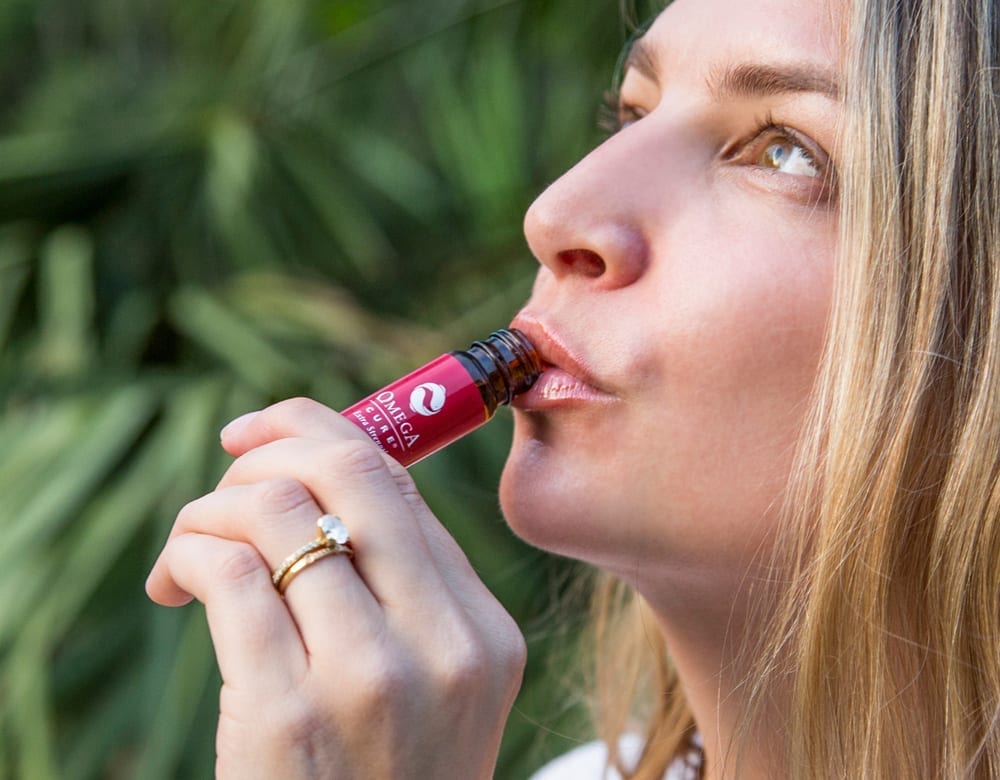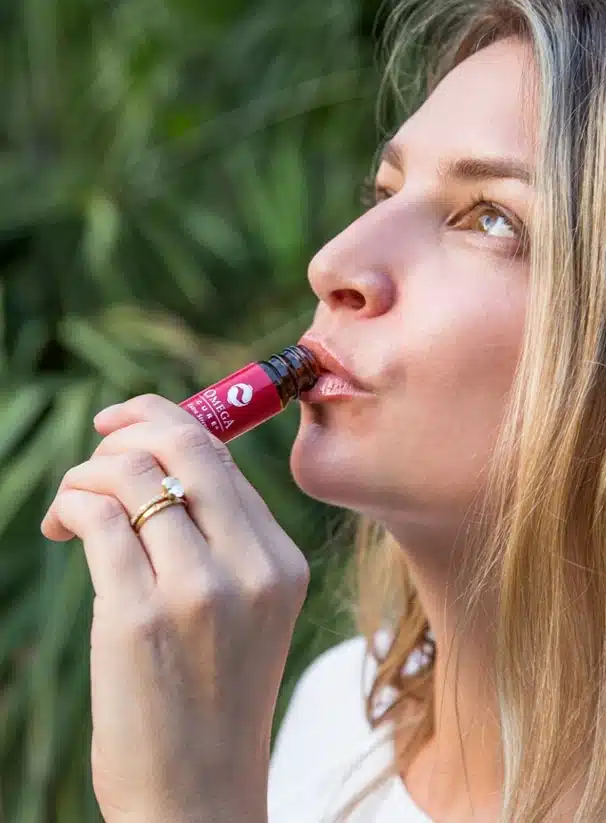12 Myths About Omega-3 Fish Oil Supplements
According to the National Center for Health Statistics, fish oil is now the most commonly used non-vitamin, non-mineral supplement in the USA (1). But just as omega-3 fish oil has grown in popularity, so has the misinformation and confusion surrounding this powerful nutrient.
Let’s clear up 12 of the most common myths about omega-3 fish oil supplements, focusing particularly on dose, source, and freshness.
Myth #1: All Omega-3 Sources Are Equally Beneficial
From salmon to flaxseed, chia seeds, and walnuts, popular health websites and magazines often claim that there are plenty of ways to get these essential fatty acids.
But not all of these omega-3 sources provide the same value.
When we talk about omega-3, we’re talking about a family of fatty acids. Of the foods we commonly eat, only fatty fish (and breast milk for babies) contain the full range of the omega-3 family, including the best-known EPA and DHA molecules.
Plant sources, in contrast, contain only one type of omega-3: ALA.
Relying exclusively on ALA-based foods for your omega-3s has several problems. Firstly, almost every omega-3 clinical study to date has focused on EPA and DHA from fish and fish oil. In other words, there just isn’t a lot of science showing that ALA has the same benefits as EPA and DHA.
Secondly, for a long time, it was believed that people had the ability to synthesize EPA and DHA from ALA-based foods. More recent research, however, shows that the conversion rate of ALA into EPA and DHA is so low that it’s inconsequential for most people (2). This is why eating fatty fish or taking a quality fish oil supplement is far superior in delivering the benefits of omega-3s.
Myth #2: Eating Fish Is the Best Way to Get Your Omega-3s
Eating fatty fish is a wonderful way to increase your omega-3 intake. But today, there is a clear discrepancy between this often-heard recommendation and reality: Studies show that an estimated 95% of Americans do not get enough omega-3s from their diets (3).
There are many factors that contribute to why so few Americans get enough omega-3s. Many people say they don’t eat fish because they follow a vegetarian or vegan diet, are unsure of how to prepare it, feel like they can’t afford it, or don’t care for the taste or texture.
But even for the people who eat seafood regularly, it can be challenging to get enough omega-3s from diet alone. Some of the most popular seafood options — like shrimp or tilapia — contain almost no omega-3 fatty acids. In addition, other factors — like whether the fish was farm raised or wild caught, the season, and the cooking method –can all significantly impact the omega-3 content as well.
Be Aware of the Fish You Eat
Let’s take the example of eating salmon for dinner. With a wild caught salmon, the amount of omega-3s can vary somewhat depending on the season and the type of salmon. However, you would still expect a wild-caught salmon to contain a substantial amount of omega-3s. If the salmon is farm raised, however, its nutritional value can vary tremendously depending on the provider. For instance, the BBC reported in 2016 that over a five-year period, the omega-3 levels in farmed salmon shrank by 50% because the industry was cutting down on costs (4).
In other words, consumers eating farmed fish now have to eat twice as much fish to get the same amount of omega-3s provided just a few years before!
This is all to say, if you are like most Americans, you probably need to consider omega-3 supplements. If think you might already be consuming a sufficient amount of these fatty acids, consider taking an omega-3 index test to find out if you are right.
Not all meals involving fish contain a meaningful amount of omega-3s.
Myth #3: Getting a Little Omega-3 Is Better Than Nothing
Studies show that omega-3s have a dose dependent effect. This means that the benefits associated with these fatty acids depend on the amount consumed.
Research also shows that you often need to reach – and maintain – a certain threshold dose to get results. For instance, a 2018 meta-analysis looking at anxiety found significant clinical benefits when patients consumed omega-3 doses greater than 2000 mg EPA/DHA daily. But the researchers did not find significant benefits at doses below that mark (5).
Similarly, in reviews looking at the anti-inflammatory benefits of omega-3s, researchers have found that it typically takes more than 2000 mg of EPA/DHA to demonstrate effects at the cellular level (6). For other health areas, like lowering triglyceride levels, rheumatoid arthritis, and cancers, the omega-3 doses used in successful clinical trials frequently go even higher (7, 8).
The reason we need a sufficient amount of omega-3s makes more sense when you understand how these fatty acids work in the body. In our cells, the omega-3 molecules compete for the same enzymes as the omega-6 molecules to carry out their beneficial actions. Historically, humans evolved on a diet that delivered about the same amount of omega-3s and omega-6s. But because today’s processed foods are saturated with pro-inflammatory omega-6s, most Americans get 20 times or more omega-6s than omega-3s (9). This significant imbalance means the omega-6 molecules always win the enzymes, resulting in chronic inflammation.
To correct the imbalance, most people need to consume a substantial amount of EPA/DHA for the omega-3s to have any possibility of competing with the omega-6 molecules. That’s why if you are first going to invest in quality fish oil supplements, it’s important to get an effective omega-3 dose every day. Otherwise, it’s likely you will never feel much of a difference.
Myth #4: Your Daily Omega-3 Dose Depends on Age and Weight
An individual’s omega-3 dose requirements depends on many factors, including age, genetics, diet and lifestyle. For instance, a person who eats fewer processed foods (which contain pro-inflammatory omega-6s) often needs less omega-3s.
Perhaps the most important dose determinant, however, is a person’s clinical condition. The more aggressive their inflammation, the more omega-3 is needed to combat it.
Myth #5: Fish Oil Is Supposed to Smell and Taste Fishy
Just like truly fresh seafood, fresh fish oil has no fishy taste or smell. If it does, it has started to oxidize and go rancid.
Besides tasting and smelling bad, rancid fish oil is likely toxic. In animal studies, consuming rancid oil has been linked with organ damage and atherosclerosis (10). Other researchers have found that oxidized fatty acids have a pro-inflammatory and mutagenic effect (11), and may even increase certain risk factors for Alzheimer’s disease (12).
To determine whether your omega-3 supplement is rancid, break open the capsule to taste and smell the oil inside. You can also measure an oil’s rancidity level by looking at its oxidation values.
If you don’t know the oxidation values of your omega-3 supplement, break open your capsules to taste and smell what’s inside. Truly fresh fish oil should taste and smell like fresh fish — meaning, not fishy at all.
Myth #6: You Can Prevent Fishy Burps by Freezing Fish Oil Capsules
Foul-tasting fish oil burps are a typical symptom of rancid fish oil. But while freezing your fish oil capsules may help mask fishy flavors and slow digestion in the stomach, it doesn’t solve the rancidity problem if the oil has already gone bad.
Regardless of whether or not your fish oil capsules make you burp, break them open when you first buy them. Taste and smell the oil inside to check whether the oil is still fresh. Only if the oil passes the test should you put your fish oil in the freezer to guard against future oxidation.
Myth #7: Expiration Dates Indicate Freshness
If you leave milk on the counter for a day or two, it’ll go bad, no matter the expiration date. The same rules apply to fish oil.
If fresh fish oil is stored airtight in the freezer, it can easily hold for up to a year. But once an oil has been exposed to oxygen, it will quickly oxidize, giving off the familiar smell and taste of fish in the process. It is worth mentioning that gelatin capsules do not provide a complete oxygen barrier, so an oil will typically continue to oxidize after it has been encapsulated.
Clinical studies show that most fish oils have oxidized long before their stated expiration date (10, 13). Therefore, the best way to assess the quality of your fish oil supplement is to use your sense of smell and taste – the same way you’d assess any other perishable food.
Myth #8: If Your Fish Oil Meets Industry Standards, It’s Fine
It is true that the omega-3 industry has set limits for how oxidized an oil can be. But consumers should know that these numbers are set by the manufacturers themselves.
The peroxide value (PV) of truly fresh oil is typically below 2.0 mEq/kg (14). As the peroxide value increases, so does the intensity of the fishy taste and smell.
Despite this fact, the omega-3 industry sets its cut-off limit at 5.0 mEq/kg – considerably higher than what most consumers would be able to tolerate! Furthermore, just because an omega-3 oil has a peroxide value of below 5 mEq/kg at the time of production, that does not ensure the oil’s peroxide value is still below that level by the time it reaches the consumer, often months or years later.
It’s absolutely possible to manufacture fresh fish oil with PV values close to that of fresh fish. But for that to be true, the manufacturer needs to uphold strict standards from the time the fish is caught to when the bottles arrive at the consumer’s home.
For instance, Omega Cure® typically has a peroxide value between 0.1 – 0.5 mEq/kg at the time of bottling. For greater transparency, each container is also printed with the bottling date and the batch’s oxidation values.
In the world of fish oil, peroxide values indicate an oil’s freshness level. Generally speaking, the lower the peroxide value, the fresher the oil is.
Myth #9: Concentrated Fish Oils Are Better
Concentrated omega-3 oils are popular because they deliver higher amounts of EPA/DHA per serving. But concentrated fish oils can be problematic too.
To create concentrated omega-3 oils, the manufacturer has to change the oil’s natural fatty acid balance, stripping the oil of its full spectrum omega-3 content. Studies show this can negatively impact the bioavailability of the oil (15). Additionally, certain types of concentrated omega-3s called ethyl esters are not considered safe for pregnant women or infants due to their synthetic chemical structure (16).
Natural liquid fish oils allow people to get the same EPA/DHA dose found in concentrated fish oils – in just a few teaspoons. And with truly fresh liquid fish oil, consumers typically have an easy time drinking the oil straight.
Myth #10: If Your Fish Oil Turns Cloudy in the Freezer, It’s a Sign of Poor Quality
This myth was created by a group of marketers interested in selling a highly concentrated omega-3 product. Any natural oil that contains a spectrum of different types of fats will turn cloudy when it is chilled. If you were to stick a bottle extra virgin olive oil (EVOO) in the refrigerator or freezer, it would do the same.
A natural, full-spectrum fish oil typically contains at most 30% EPA/DHA. The rest of the oil is made up a cocktail of other beneficial fats: Other types of omega-3s, omega-7s, omega-9s, the kinds of monounsaturated fats you get in extra virgin olive oil, and saturated fats like you find in avocados. With their different chemical structures, these fats look and behave differently when cooled. That is why the composition will not appear uniform when you freeze or refrigerate the oil.
Myth #11: EPA- and DHA-Only Supplements Are Healthier
In the scientific community, there’s a natural desire to understand the unique roles of EPA and DHA in the body. For instance, studies show that EPA seems to be especially effective for lowering inflammation, whereas DHA seems to be more important for brain function.
Isolating different omega-3 fatty acids is certainly helpful from a research perspective. But offering either EPA-only or DHA-only supplements to consumers ignores the fact that these nutrients never appear alone in nature. As further research shows us, these nutrients have unique effects and work synergistically (17, 18).
We do not yet fully know the long-term consequences of supplementing with chemically modified EPA- or DHA-alone supplements. But we do know that people have been drinking full-spectrum fish oils and cod liver oils for medicinal reasons dating back to the ancient Greeks. This is why I believe that it is important to choose a full-spectrum omega-3 oil that provides a full range of omega-3 fatty acids and nutrient substrates. This way, your body can fully utilize these nutrients as needed.
EPA and DHA work like a team in the cell. That’s why we need both of them (and the other members of the omega-3 family) for optimal health.
Myth #12: Fish Oil Benefits Are Too Good to Be True
If a nutrient gets credited with helping improve chronic pain and dry eyes, depression, cognitive function and more, it’s got to be too good to be true, right?
The reason omega-3s are researched for a broad range of health issues is because these nutrients are critical for the proper functioning of every cell in our body. They enhance the fluidity and permeability of the cell membrane; they influence cell signaling and gene expression; they help control the body’s inflammation response; and more research is coming out showing how these fatty acids support the microbiome and endocannabinoid system.
It’s estimated that omega-3s are involved in more than 10% of all cellular metabolic actions. No wonder high quality fish oil can produce such varied, widespread effects in the body.
An Effective Omega-3 Dose, Made Simple
As the research shows, experiencing meaningful benefits from fish oil necessitates getting an effective omega-3 dose, a good quality oil, and taking it regularly. That’s why at Omega3 Innovations, we’re passionate about creating products that make these aspects of omega-3 supplementation easier to experience.
We’ve developed Omega Cure Extra Strength, an exceptionally fresh, full-spectrum omega-3 oil with no fishy taste or smell. Each pre-measured vial delivers 3000 mg EPA/DHA — everything needed for a perfect dose.
An Effective Omega-3 Dose, Made Simple
Experience the Omega3 Innovations difference for yourself with the most effective fish oil supplement on the market.
Buy Now
References:
1. Clarke, T.C., Black, L.I., Stussman, B.J., Barnes, P.M., & Nahin RL. (2015). Trends in the Use of Complementary Health Approaches Among Adults: United States, 2002–2012. National Health Statistics Reports; No 79. Hyattsville, MD: National Center for Health Statistics.
2. Baum, S.J. & Scholz, K.P. (2019). Rounding the Corner on Residual Risk: Implications of REDUCE‐IT for Omega‐3 Polyunsaturated Fatty Acids Treatment in Secondary Prevention of Atherosclerotic Cardiovascular Disease. Clinical Cardiology, 1– 10.
3. Daniells, S. (2015). Could Widespread Low Omega-3 Levels Be Putting American Hearts at Risk? Nutra-Ingredients-USA.
4. Ghosh, P. (2016). Omega-3 Oils in Farmed Salmon ‘Halve in Five Years.’ BBC News.
5. Su, K., Tseng, P., Lin, P., et al. (2018). Association of Use of Omega-3 Polyunsaturated Fatty Acids With Changes in Severity of Anxiety Symptoms: A Systematic Review and Meta-analysis. JAMA Netw Open, 1(5):e182327.
6. Calder, P. C. (2013). Omega-3 Polyunsaturated Fatty Acids and Inflammatory Processes: Nutrition or Pharmacology? British Journal of Clinical Pharmacology, 75(3), 645–662.
7. Fabian, C. J., Kimler, B. F., & Hursting, S. D. (2015). Omega-3 Fatty Acids for Breast Cancer Prevention and Survivorship. Breast Cancer Research: BCR, 17(1), 62.
8. Yee, L. D. et al. (2010). Omega-3 Fatty Acid Supplements in Women at High Risk of Breast Cancer Have Dose-Dependent Effects on Breast Adipose Tissue Fatty Acid Composition. The American Journal of Clinical Nutrition, 91(5), 1185–1194.
9. Simopoulos A. P. (2016). An Increase in the Omega-6/Omega-3 Fatty Acid Ratio Increases the Risk for Obesity. Nutrients, 8(3), 128.
10. Albert, B. B. et al. (2015). Fish Oil Supplements in New Zealand are Highly Oxidised and Do Not Meet Label Content of N-3 PUFA. Scientific Reports, 5, 7928.
11. Wang, W., Yang, H., Johnson, D., Gensler, C., Decker, E., and Zhang, G. (2017). Chemistry and Biology of -3 PUFA Peroxidation-Derived Compounds, Prostaglandins Other Lipid Mediat (2016). Prostaglandins & Other Lipid Mediators, 132: 84 – 91.
12. Grimm, M.O. et al. (2016). Oxidized Docosahexaenoic Acid Species and Lipid Peroxidation Products Increase Amyloidogenic Amyloid Precursor Protein Processing. Neurodegenerative Diseases, 16(1-2): 44-54.
13. Jackowski, S. A. et al. (2015). Oxidation Levels of North American Over-the-Counter N-3 (Omega-3) Supplements and the Influence of Supplement Formulation and Delivery Form on Evaluating Oxidative Safety. Journal of Nutritional Science, 4, e30.
14. Halvorsen, B. L., & Blomhoff, R. (2011). Determination of Lipid Oxidation Products in Vegetable Oils and Marine Omega-3 Supplements. Food & Nutrition Research, 55.
15. Dyerberg. J., Madsen, P., Moller, J.M., et al. (2010). Bioavailability of Marine N-3 Fatty Acid Formulations. Prostaglandins, Leukotrienes, and Essential Fatty Acids, 83:137–141.
16. Opperman, M. & Bennade, S. (2013). Analysis of the Omega-3 Fatty Acid Content of South African Fish Oil Supplements: A Follow-Up Study. Cardiovascular Journal of Africa, 24(8): 297–302.
17. Mozaffarian, D., & Wu, J. H. (2012). (N-3) Fatty Acids and Cardiovascular Health: Are Effects of EPA and DHA Shared or Complementary? The Journal of Nutrition, 142(3), 614S–625S.
18. Dyall S. C. (2015). Long-Chain Omega-3 Fatty Acids and the Brain: A Review of the Independent and Shared Effects of EPA, DPA and DHA. Frontiers in Aging Neuroscience, 7, 52.
Recent Posts
-
Dose, Joint Health, Omega-3
Omega-3 & Pain Relief: Finding the Best Strategy
Are you one among the 1 in 5 Americans grappling with chronic pain, as reported by the CDC [1]? If the thought of traditional pain medications and their potential side...3 months ago -
Eye Health, Omega-3
The Startling Link Between Skin Care and Eye Health
Dry eye complaints are on the rise worldwide. Many risk factors – including aging and increased computer use – help explain the increase. But there's another driver few people know...6 months ago -
Heart Health
Does Taking Fish Oil Lower Cholesterol?
Many people believe that incorporating omega-3s into their diet will solve their cholesterol woes. But the truth is much more nuanced; it's not as simple as taking a daily fish...1 year ago -
Immune Health, Sleep
Melatonin & COVID-19: Can This ‘Sleep Hormone’ Help?
It started with a runny nose and a slight cough. But when his 72-year-old wife tested positive for COVID-19, he got concerned. “Is there any research suggesting the supplements we...2 years ago -
Full-Spectrum Fish Oil, Omega-3
Is It Good to Store Fish Oil in the Freezer?
Fish oil is a great source of the omega-3 fatty acids we all need for good health. It’s also highly perishable. Consuming rancid fish oil can have negative health implications....2 years ago -
Omega-3
Our Favorite Omega-3 Fish Oil Benefits
Omega-3 fish oil certainly has a reputation for delivering a plethora of incredible benefits. And it’s true! Omega-3 fatty acids have been studied for a broad range of health conditions....2 years ago











